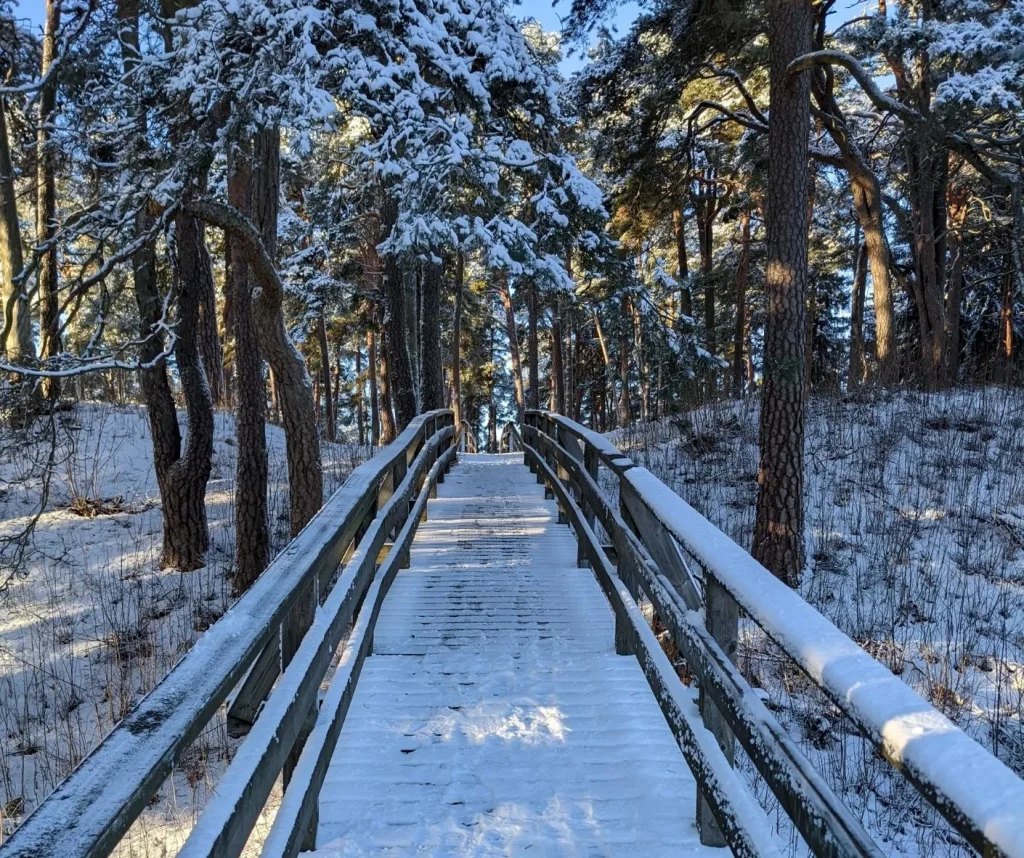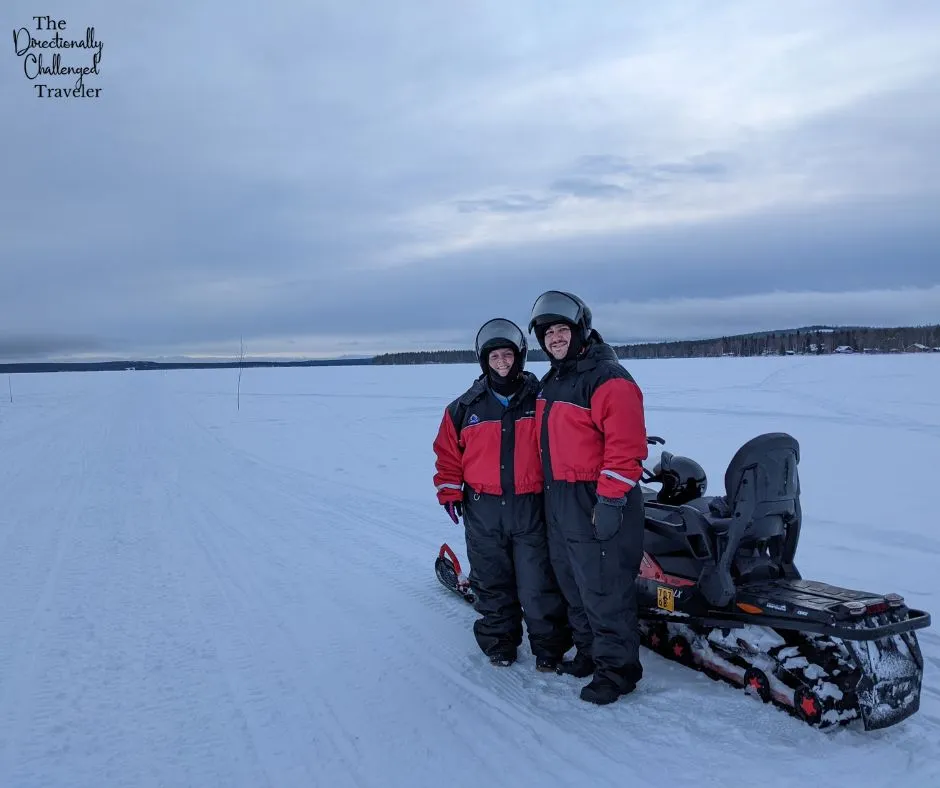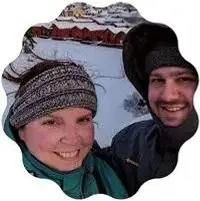17 Important Winter Travel Tips
General Travel Tips, Travel Tips / March 11, 2025 / 7 comments
One of my favorite times of the year to travel is winter (but I also love winter at home). The coziness of winter, the beautiful white landscapes, and of course, the holiday decorations just bring magic to any place. However, as magical as this time of the year is, it can also be incredibly frustrating to travel in. I am the first one to avoid driving if there is any snow on the ground. Winter weather brings unique challenges, from icy roads to unpredictable flight delays, making it essential to be prepared. Understanding how to navigate these elements can ensure a smoother and more enjoyable journey.
With a little planning and some wise choices, you can protect yourself and your travel plans. Knowing what to pack and how to dress can make all the difference when temperatures drop. One lesson that we learned from visiting Finland in winter was that there is no such thing as bad weather, just bad clothing. Being informed can turn winter travel into a memorable adventure rather than a hassle.
I’ll give you over ten important winter travel tips that will help you stay safe, comfortable, and organized. From planning your route to packing the right clothes, these tips will keep you ready for whatever winter throws your way. Hopefully you’ll discover that traveling in winter isn’t as scary as some people make it out to be.
This post contains affiliate links. This means if you purchase something from a link, I may make a small commission, at no cost to you. This helps me keep the site running and free.
If you like this post, be sure to sign up for my e-mail list for travel inspiration (and get your FREE budget printable), or connect with me on Facebook, Instagram, Twitter, or Pinterest.
17 Essential Winter Travel Tips (Whether You Drive or Fly)
Traveling in winter brings its own set of challenges with cold temperatures and unpredictable weather conditions. But with smart planning and a few essential travel tips, you can stay safe and enjoy your winter trip. Weather-related disruptions are quite common, so it’s important to pack the right clothes and accessories, keep your mode of transport in good shape, and allow yourself plenty of time to get where you’re going. From choosing the right outer layer to carrying an ice scraper for your car, the following tips will set you up for a memorable and secure journey during the harsh winter weather.

1. Plan ahead
Winter can cause delays, especially at the airport. Plan your flight carefully. Try to book a nonstop flight. If possible, add a day to your travel (especially at the beginning of your trip). Delays and cancellations happen more often when it snows. So if you have a day built in for those delays, it’ll be a lot less stressful when coordinating new flights.
If you fly, tell the crew if you have a tight connection. They could help by getting you off the plane first, calling the gate ahead, etc.
Planning also includes packing the right clothing and items you’ll need for your trip. Water and windproof jacket and pants to cat litter in the car to help with ice.
2. Allow extra time for travel
Snow and ice slow you down. When you travel in winter, give yourself extra time. This keeps you safe and lowers stress. It’s better to travel slowly than rush in bad weather.
If you’re driving, I typically recommend doubling the amount of time so you aren’t stressed while driving. If you get there early then you get more time to explore.

3. Dress in layers
Layering is key in winter. Another lesson from Finland was that jeans don’t count as a layer in winter.
Start with base layers for warmth. Fleece-lined leggings or long johns are a great base. Then “normal” pants like jeans if you’re going out (but remember these don’t count as a layer for warmth). Add an outer layer for wind and water protection. These windproof pants were a godsend in Finland.
Layers let you adjust to changing weather. Don’t forget a hat, scarf, and a good pair of gloves. I like these gloves so I can still use my phone to navigate around the city. They’re windproof too.
If you’re worried about running out of space, be sure to use compression packing cubes to make the most of your luggage space. If you’re skeptical about packing cubes, be sure to read my guide to why you should be using packing cubes.
4. Stay hydrated
Cold air is dry. Often we don’t realize how dry it actually is. Drink lots of water to stay hydrated. Carry a reusable water bottle to make it easy to hydrate on the go during your winter activities.
Hot drinks also help. They keep you warm and hydrated. I like to carry tea with me or even hot chocolate. While not as hydrating as water, it helps keep you warm and does help a little with hydration (plus, who doesn’t love hot chocolate!)
5. Protect your skin
Most people think of sun damage as a summer problem, but it’s not. The winter sun can be just as damaging. Use moisturizer and chapstick in cold weather. Use SPF face cream. Keep your skin happy on your trip.

6. Check the forecast before heading out
Look at the weather report. Know about the snow and temperature where you’re going. This helps you dress right and decide if it’s safe to travel. It might impact your travel plans or you might need to prepare more.
7. Be mindful of ice and snow
Drive slow in the snow. Snow and ice make driving dangerous. Have more time in your plan for snow. Use snow tires if you can. Check your tire pressure before heading out – the cold can impact the pressure in the tires. In fact, I typically suggest a full car tune-up if you’re driving in the snow. Check your antilock brakes, brake pedals, oil level, washer fluid, lights, suspension, and the whole thing so that you have peace of mind for driving. If you’re renting a car in a country with a rough winter, it might come with winter tires which is good!
8. Drive carefully & stay on the main roads
Stay safe on the road. Use major roads. They are safer and have better cell service. When we were driving from Reykjavik to Vik, we were told to stay on the Ring Road as much as possible. This is the main road around Iceland that is often the most clear. We got lucky with the weather, but the weather in Iceland can change at any time.
Be sure to drive in the day for better light. In the northern countries, sunset is MUCH earlier. Iceland sunset was at 4 pm but in Finland, it was closer to 3-3:30 pm.

9. Download Maps Offline
Always be prepared. Download Google Maps offline so that you don’t need to waste battery trying to find a signal. If you’ve got access to a printer, having a paper map wouldn’t hurt!
I always share my itinerary and plan with someone back home. Be sure to tell someone where you are going.
10. Know your route
Be sure to do your research before heading out in the winter. Not only will you know about potential delays, but you’ll feel more comfortable driving. You’ll know if there are hills that would have more risky icy conditions. You might find out that a strip of the road is windier than others because of the location. This is one of those tips for winter travel that people don’t think about. You’d be surprised at what you can learn about a place with a little bit of research.
11. Keep your phone charged
This is one of my most important winter travel tips. Keep your phone battery full. It’s important for safety and getting information. Bring a car charger for your trip.
Know your emergency phone number in the country that you’re visiting so you can get roadside assistance if needed. Having a car charger or a portable charger so that way your phone is always available.

12. Get travel insurance.
Travel insurance can help if things go wrong, or if your trip/flight gets canceled. It can cover lost things or delays. Look at World Nomads or SafetyWing. Here’s your guide to how to get Travel Insurance (and why you should).
13. Pack snacks.
Good snacks are always a travel essential, but they’re even more important in winter. If you get stuck, snacks would be helpful to keep your mood up while you wait for help. They would also help since driving might take longer than expected.
I also bring snacks for other winter activities. Hiking in snow takes a lot more energy, so having something with us to restore that energy. When we were snowmobiling, we took a break on a frozen lake for cookies and hot chocolate. It was the perfect way to warm up and refuel while enjoying the breathtaking winter views.
14. Bring cash.
I know, I’m not one to carry cash, like ever. However, for winter travel it’s important to have some emergency cash on you. It can be especially useful in small towns or businesses that may not take cards. Cash is good in power outages too. Here’s my guide to how much cash you should bring on your travels as a good place to start.
15. Make copies of important documents.
Another general travel safety tip, but more important for winter travel. I always carry a copy of my passport both physical and digital. But it’s even more important for winter travel when you might not have service.

16. Pack hand warmers
One of my essential winter travel tips is to pack hand warmers. My hands are always cold, so these are essential for me. I like the Hot Hands brand of hand warmers, but have just discovered these rechargeable hand warmers!
17. Be flexible
This should probably be the number one in my tips for winter travel, but it’s really just a travel skill for anywhere you go. Winter can be unpredictable. It’s important to be able to be flexible and adapt to ever-changing situations.
How to Pack for Cold Weather
When you get ready for a winter trip, it’s important to think smart about what to pack. You want to fit all you need without your suitcase getting too heavy. Winter travel clothes can be bulky or fluffy for protection. (This is why you should use packing cubes!)
Choosing high-quality items is a good trick because you can rely on them to keep you warm. Being cold and miserable is a great way to ruin a trip.
Pack Layers, Not Bulk
Packing layers means you can handle different kinds of weather and save space in your suitcase. Bring short and long-sleeve tops, sweaters, and lots of socks so you can be cozy no matter what you’re doing. Fleece-lined leggings were my go-to! Compression packing cubes can press your winter clothes down to take less room. With a very warm coat as your outer layer, you can wear lots of layers underneath without getting cold.
Sometimes you can borrow or rent big winter things where you’re going. This was pretty common in Ushuaia for travelers heading to Antarctica. I had snow pants, but many people could rent them for their trip and bring them back when their cruise ended.

If It’s Bulky, Wear It
One way to save space in your luggage is to wear your biggest coat and boots when you fly. If you’re traveling from a place that doesn’t have a cold winter season, you can buy stuff when you get there. With winter travel, wearing your big jackets and sweaters on the plane can give you more room in your bag. Compression packing cubes are great for making big clothes smaller by getting the air out. Your winter coat can go in the overhead bin or be a pillow when flying.
Finding shoes that work for lots of things is important because winter shoes can take up a lot of room. If you wear them on the plane, you’ll have more space.
Heavy Clothing isn’t Always Right
Just because it’s heavy, doesn’t mean it’s the right winter travel clothes. My winter peacoat was fine for celebrating New Year’s in Venice, but it wouldn’t be warm enough for visiting Antarctica. Sometimes lighter and wind or waterproof is more important. Researching what you’ll need for your destination is an important part of planning ahead.

Do you have any winter travel tips that I didn’t mention? Let me know in the comments!
Final Thoughts
Traveling in winter can be a magical experience, filled with breathtaking landscapes and unique adventures. By following these 17 important tips, you’ll not only stay warm and comfortable but also maximize your packing efficiency and minimize stress. Remember to pack smart with layers, make wise clothing choices, and prioritize versatility. Whether you’re exploring snowy mountains or experiencing the holiday charm of a city, being prepared will enhance your trip, allowing you to fully embrace the season’s wonders. Don’t be afraid to travel in winter – just be prepared!
Save “17 Important Winter Travel Tips” for Later
About the Author


7 responses to “17 Important Winter Travel Tips”

Great tips! I’d also add to snacks, bring along extra water, especially if you need to drive off of the main roads. And, if you’re driving in a wintery/snowy area, keep a shovel in the car.

Great tips, particularly about layering your clothes. When I went to Stockholm in the middle of winter I learnt about layering the hard way. Basically, I didn’t have any layers and as you say ‘jeans don’t count as a layer’.

Great post with recommendations that people often forget about when traveling over the winter months. It’s vital to be prepared!

So many of us travel without checking off the must-have items when we pack. Your checklist is essential. Thank you for the reminders.

Great tips, thank for putting them together! I love that you incorporated ’stay hydrated’ -without heat to remind people to drink more water, most just forget. Especially when you travel for long, healthy habits need to be prioritized, yet they’re often overlooked.

Winter is so dry! I often don’t hydrate enough because I worry it might make me pee more, but there’s more clothes to get out of to go to the bathroom in winter hahaha

Very helpful tips! I wonder how people manage to rash drive even during snow season. People should be even more careful during this time.












Leave a Reply